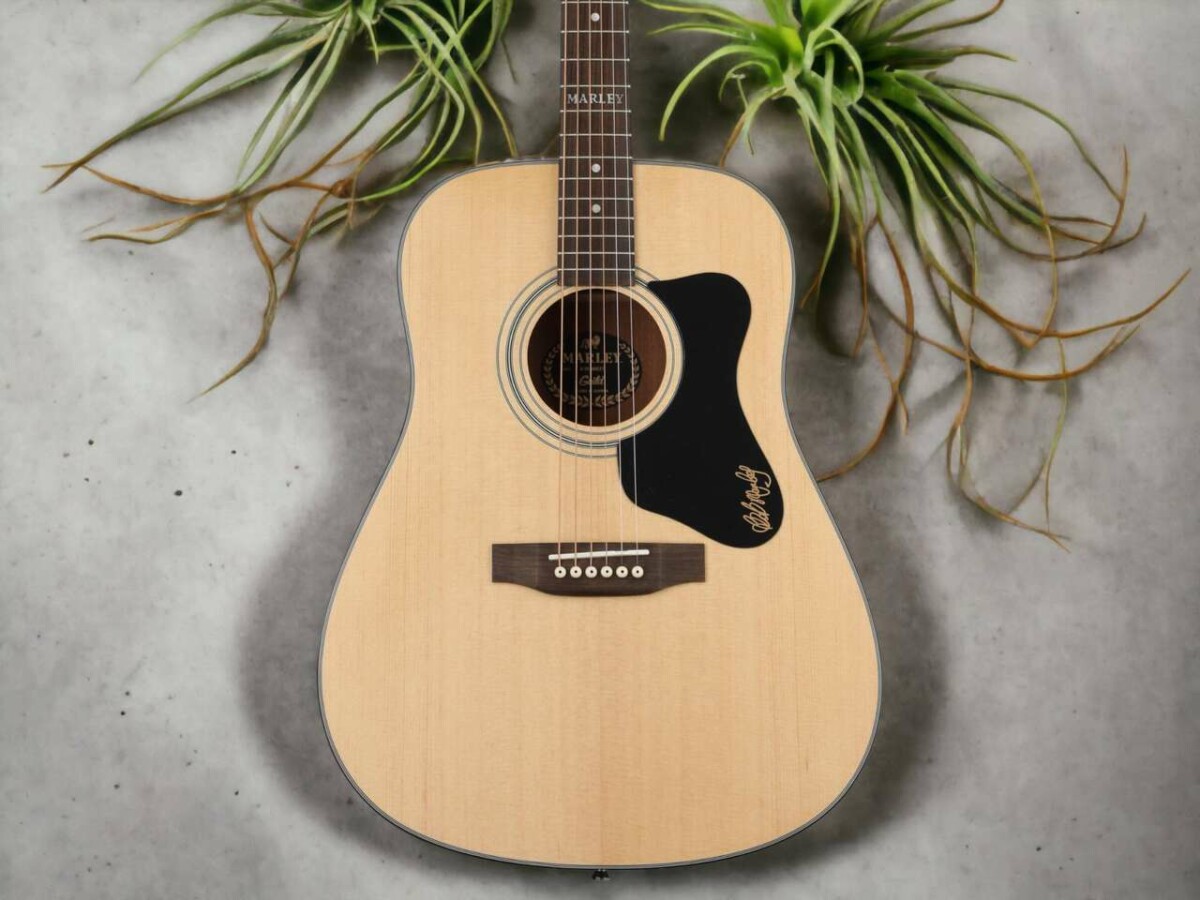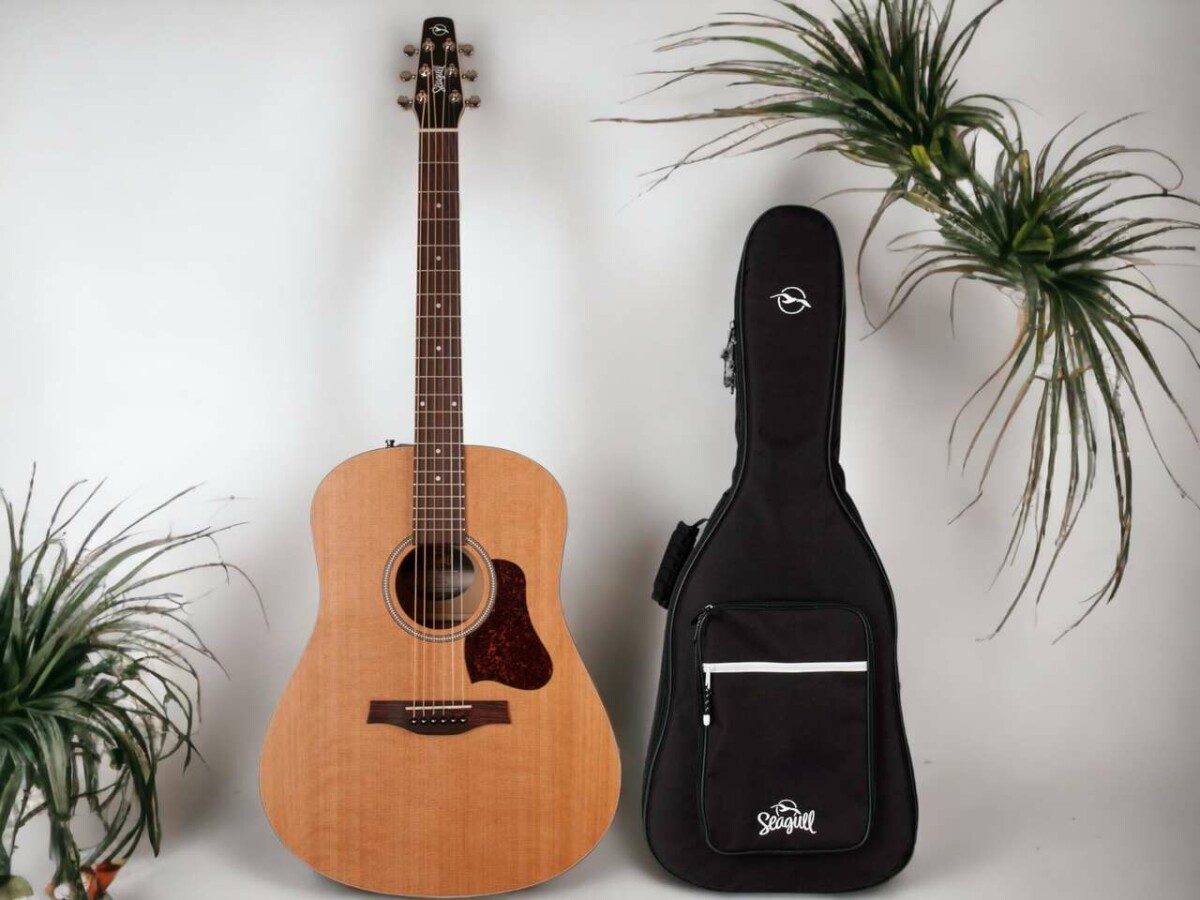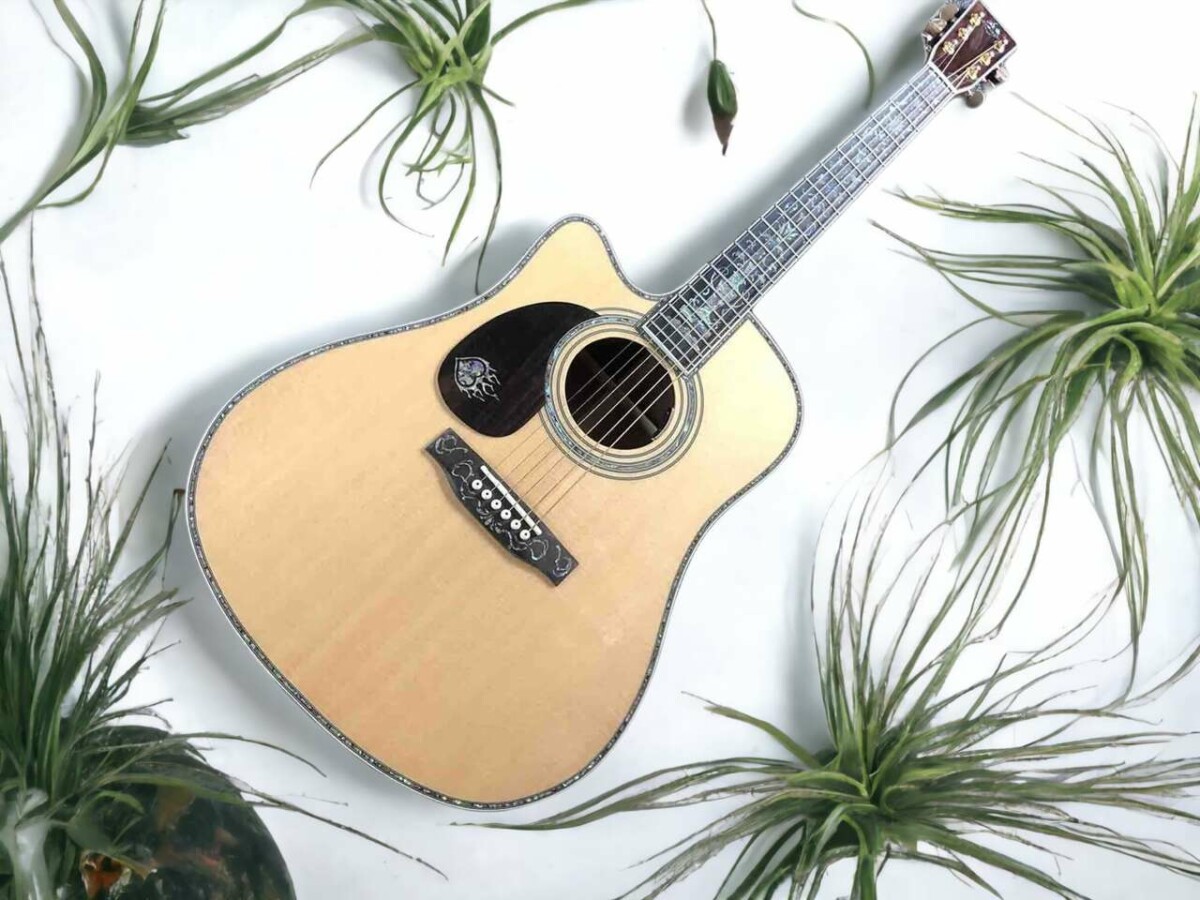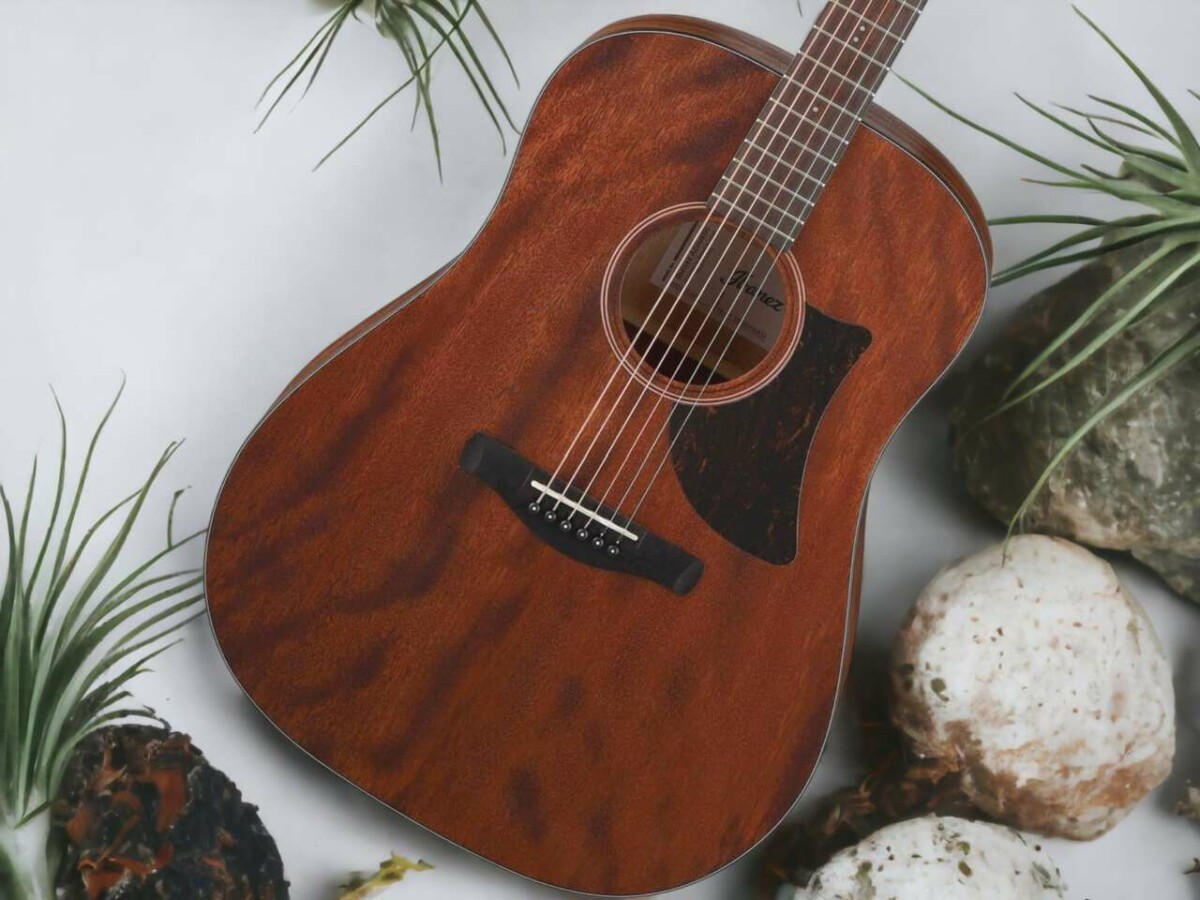Caught in a bit of a jam, aren’t you? Can’t decide between a cutaway and a dreadnought guitar, huh? No worries, we’ve totally got your back! Let’s jump head first into this epic guitar showdown.
We’ll dissect everything from the sound to the playability and even how your thumb sits on the fretboard. We’re gonna help you nail down the perfect six-string companion for your musical adventures. Buckle up and get ready to strum and shred with absolute certainty.
Your dream guitar is out there. Let’s dig it out together, shall we?
Cutaway vs Dreadnought Guitars: What’s The Difference?
Cutaway guitars come with a notch near the neck that allows easy access to higher frets, while dreadnought guitars are recognized for their larger bodies and full, rich sound. Your choice should reflect your individual playing style and personal preference.
Alright, let’s dive into a deep dive on cutaway and non-cutaway guitars, shall we? We’re going to get into the nitty-gritty of what makes these two types of guitars tick. It’s like stepping into a whole new world of acoustic instruments, each with their own set of quirks and cool features.
First things first, let’s talk body shape – that’s where the magic happens. You see, cutaway guitars have this little notch, or ‘cut’ in the body, right near the neck. This little detail makes a world of difference when you’re trying to reach those higher notes in your solos or intricate fingerstyle pieces. It’s kinda like having a shortcut to the top.
Now, non-cutaway guitars on the flip side, they keep the full body shape. No cuts, no shortcuts. Some people believe this gives them a fuller, more rounded sound. It’s like the difference between a glass of full-bodied red wine and a crisp white wine – both great, just different.
So, you might be thinking, ‘Well, cutaway guitars sound like the way to go, right?’ Hold up, don’t jump the gun just yet. Sure, the cutaway style does make it easier to reach those higher notes, but that doesn’t mean non-cutaway guitars can’t hold their own. All you need is the right technique, some practice, and maybe a little extra finger gymnastics.
When it comes to deciding between the two, it really boils down to your own style and preference. Maybe you’re a strummer who loves the rich resonance of a non-cutaway. Or maybe you’re a soloist who digs the easy access of a cutaway. Understanding the strengths and weaknesses of each type will help you pick the right axe. Remember, the best guitar is the one that just feels and sounds right to you.
Evaluating the Impact of Thumb Placement on Playability
So, you’ve picked up your axe and are all set to rock, right? Not so fast! Where you place your thumb could be a game-changer for your gig. Let’s chat about how to get your thumb in the right spot for those sweet high notes on cutaway guitars.
In the cutaway world, your thumb’s spot is crucial. Going for the highs? Your thumb should be chilling on the back of the neck, acting as a pivot for your fingers to stretch and reach. This move, combined with the sleek design of a cutaway, makes scaling those lofty frets feel like a walk in the park.
Now, let’s compare the playability of cutaway and non-cutaway guitars, focusing on thumb placement. You’ll definitely notice a difference. The cutaway’s design gives you easy-peasy access to the top frets, making it a favorite for leads and soloists.
But what about non-cutaway guitars, like a dreadnought? Well, that’s a different ball game. Your thumb action for these guitars is more of a slide. As you shimmy up the neck, your thumb will gradually slide down, letting your fingers reach those top frets.
Now, it’s a move that might need a bit more gym time for your fingers, but it’s doable. Actually, some players dig this technique and the challenge it brings.
The Effect of Guitar Shape on Sound Quality
While you’re shredding on your six-string, you may not realize how much the shape of your guitar actually influences the sound quality. Ever thought about how a cutaway design might sound compared to a traditional dreadnought? There’s been quite a bit of buzz lately about the tonal differences between cutaway and non-cutaway guitars. So let’s deep dive into the pros and cons of various guitar shapes and how they affect the sound.
From my own jam sessions, I can tell you that a cutaway guitar makes it super easy to hit those high notes. No more awkward hand contortions to reach the upper frets – it’s all smooth sailing. However, there’s a bit of a trade-off. The cut in the body can sometimes result in less resonance, which can leave you with a tone that’s a bit on the thin side compared to a full-bodied non-cutaway dreadnought.
But let’s not rush to judgement. A dreadnought, with its bigger body, can really crank out a richer and deeper sound, especially when you’re strumming chords. The bass frequencies get plenty of room to shake things up, enhancing the overall sound quality. But yeah, getting to those higher notes can be a bit of a reach, in the most literal sense.
Over the years, I’ve discovered that playing around with alternate tunings can really expand the range of both cutaway and non-cutaway guitars. You can hit lower or higher notes and add some serious spice to your sound, making up for any tonal setbacks.
At the end of the day, it’s all about what works for you. Whether you’re into the sleek cutaway or the sturdy dreadnought, each has its own special vibe. So spend some time trying different guitars and find the one that really speaks to you, both in terms of sound and feel.
Determining the Influence of Playing Style on Guitar Choice
When you’re deciding on your next guitar, your own personal playing style can really sway your decision. Are you more of a cutaway person or is a dreadnought more your vibe? Let’s break it down.
Cutaway guitars are clutch for soloists and lead guitarists. You want to rip into a solo? That’s where the cutaway design comes in handy, giving you easy access to those higher frets. But keep in mind, this design might’ve an impact on the guitar’s sound. You might be giving up some of that deep, warm tone you get with non-cutaway models.
On the flip side, dreadnought guitars are loved for their robust, rich sound. They’re a solid pick for rhythm guitarists or anyone who’s all about that bold, strong tone. Sure, getting to those higher frets might take a bit more effort, but don’t sweat it. With some practice and the right technique, you’ll be hitting those high notes in no time.
In the cutaway vs non-cutaway debate, it’s not a one-size-fits-all answer. Both have their own perks and it really comes down to what suits your playing style. If you’re big into fingerstyle and solo work, then a cutaway might be just the ticket. But if you’re all about those strumming and rhythm parts, a dreadnought could be just the thing.
But remember, it’s not just about the design. It’s also about how the guitar feels when you’re playing it. Take the time to try out different models and really think about your playing style. Trust me, when you find the right guitar, you’ll know. It’ll be like it’s singing right back at you.
Tips and Techniques for Playing on Non-Cutaway Guitars
Alright, let’s get real here. Playing on non-cutaway guitars isn’t a walk in the park. It takes a lot of patience and solid practice, but trust me, the payoff is worth it. You’ll eventually nail those high notes that seem impossible right now. The trick? It’s all about where you place your thumb. For those high notes on non-cutaways, your thumb’s spot on the back of the neck is seriously important. As you start to wander up the fretboard, your thumb needs to move off a bit. This gives your hand the wiggle room it needs to reach those tricky notes.
Now, let’s chat about the good and the bad of jamming on non-cutaway guitars, especially when you’re dealing with complicated techniques. One major perk is the rich, full-bodied tone that non-cutaways are known for. They often pump out a deeper vibe, which a lot of guitarists absolutely love. But, there’s a catch. The difficulty in reaching those high frets can be a real pain. If you’re into shredding epic solos or riffs that need those higher registers, they mightn’t be your top pick.
But hey, don’t get discouraged. Every hurdle is a chance to grow. There are plenty of guitarists who’ve refined their skills and come up with kickass techniques to get around the constraints of non-cutaways. You can do it too. Figure out your own style for tackling complex patterns and chords on your non-cutaway.





